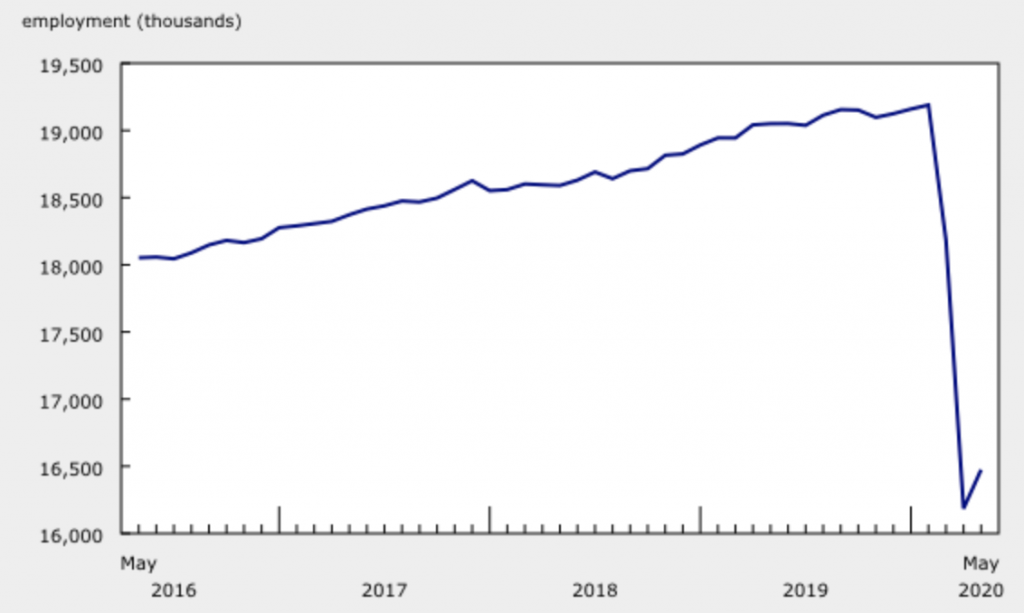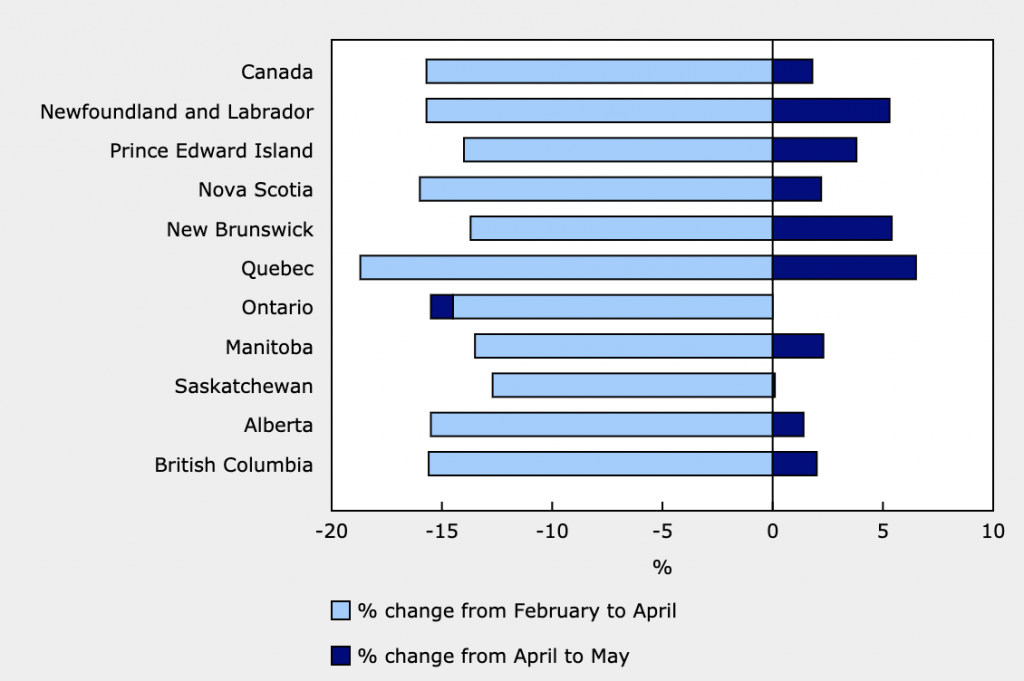As the coronavirus pandemic is starting to subside and restrictions and lockdowns are being lifted, the state of Canada’s economy is becoming more evident. According to the Labour Force Survey released by Statistics Canada the month of May is showing signs of a rebound in the labour market.
Bloomberg economists previously predicted an unemployment rate of at least 15%; however, the latest data shows a much lower unemployment rate of 13.7% for May, which only increased by 0.7% since April.

Since the onset of the coronavirus pandemic, much of Canada’s economy has gone into limp mode. As a result, between February and April, a total of 5.5 million Canadians were affected, with 3 million of them losing employment. However, the month of May is showing signs of slight improvement, with an increase of 290,000 Canadians returning to work, and the number of individuals on reduced hours decreased by 292,000. Combined, the numbers amount to a 10.6% decrease in unemployment and absences compared to the two months prior.
Furthermore, the data also suggests that as restrictions are being slowly lifted, some sectors of the economy are rebounding faster than others. Initially, the service-producing sector was hit hardest by the pandemic during the middle of March, followed by the goods-producing sector including manufacturing and construction. Now as some restrictions are being lifted, the goods-producing industries are posting an employment rebound of 5%, while employment in the services-producing sector has only increased by 1%.
As each province is beginning to lift restrictions at their own pace, there is a resulting discrepancy between provincial employment levels. Quebec began easing restrictions in mid-April for the construction industry, and May 4 for the manufacturing, retail and trade industries. As a result, the province accounts for the highest gains, with a 6.5% increase in employment and a recovery of 30% of the losses accumulated between March and April.

Ontario on the other hand, is still experiencing increasing unemployment rates. The province has not been lenient on easing many of the COVID-19 restrictions, and as a result the unemployment rate increased from 11.3% in April to 13.6% in May. For the Western Provinces, there have been some gains, but otherwise the numbers remain largely unchanged. In British Columbia, the unemployment rate increased from 11.5% to 13.4%, meanwhile Alberta saw an increase of 2.1%, bringing the unemployment rate to 15.5%. Data for Saskatchewan suggests the province’s economy remains largely unchanged, while Manitoba saw a 13,000 increase in employment numbers.
It also appears that the economic implications from the pandemic are affecting the labour market for men and women differently. much of the employment losses from March to April have been recovered by men, with a total employment increase of 2.4% contributed by men, while only 1.1% by women. The easing of restrictions have predominately had a positive impact on male-dominated industries, meanwhile women are facing difficulties in returning to work because they are caring for their children while schools remain closed.
Information for this briefing was found via Statistics Canada and Bloomberg. The author has no securities or affiliations related to this organization. Not a recommendation to buy or sell. Always do additional research and consult a professional before purchasing a security. The author holds no licenses.










2 Responses
Stats Can, that is.
I once managed an 150 employee, 20 million dollar manufacturing company. Every day I struggled to find out what was going on in my own company but these folks know what’s going on in the entire country.
Don’t eat that Almer. That’s horseshit.